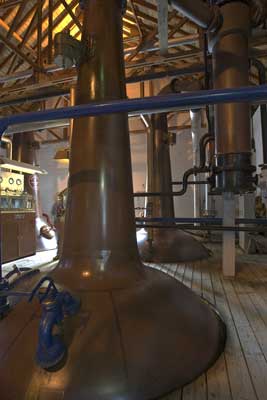
The whisky tasting notes summary are presented as follows:
Name/description, Age, Bottler, Strength. Distillation date/ Bottling date. Price:![]() Colour:
Colour:
Nose:
Taste:
General impression:
Rating:__/20 ![]()
FP: Flavour Profile
Explanation:
Name/description: Name of the distillery and/or other relevant informations on the label of the bottle.
Age: expressed in years of age (Year Old= YO), when applicable. NAS = No Age Specified.
Bottler: Original bottling is abbreviated OB. For the independent bottlers, the following abbreviations are used:
BBR: Berry Bros & Rudd:
G&M: Gordon MacPhail
D. Laing OMC: Douglas Laing Old Malt Cask
DT: Duncan Taylor
JMA: James MacArthur
LMDW: La Maison du Whisky
MMD: Murray McDavid
PDA: Part Des Anges
SMOS: Single Malts of Scotland
SMWS: Scotch Malt Whisky Society
TWA: The Whisky Agency
TWE: The Whisky Exchange
Strength: Percentage of alcohol by volume (%ABV). STFC= Straight from the Cask, strength unknown.
Distillation date: Date of the spirit distillation (D.), if known.
Bottling date: Date of bottling (B.), if known or date of purchase.
Price: Based on the observed retail price in Switzerland or the United Kingdom. Provided on informative basis only. Price may vary depending on the retailer, offer and country. The following scale is used
| Euro (€) | Pound Sterling (£) | US Dollars ($) | Swiss Francs (CHF) | stars |
| 0-20 | 0-15 | 0-25 | 0-30 | |
| 21-30 | 16-20 | 26-40 | 31-50 | |
| 31-50 | 21-30 | 41-60 | 51-75 | |
| 51-100 | 31-60 | 61-125 | 76-150 | |
| 101-200 | 61-120 | 125-250 | 151-300 | |
| 201+ | 120+ | 251+ | 301+ |
Other abbreviations: N.A. = Not available N.C. = Not Communicated.
Colour: colour of the whisky in a clear glass. The nine colours I have selected are illustrated on my tasting note sheet.
Nose: Description of the aromas perceived by nosing. Aromas are impaired to the whisky, either from the production or the maturation. The most common flavours detected are: smoke, floral, fruity and vanilla/wood. Those main "classes" of aromas can then be subdivided further. Nosing is usually done at normal strength (40-46%) and for cask strength whiskies, the first nosing is done straight without dilution. The whisky should be nosed a second time following dilution with water.
Taste: Taste is an important characteristic of whisky tasting and I distinguish 4 parameters: The mouthfeel is the first impression you have when you swallow your whisky. When it starts to coat the mouth, the body or the heart comes . The aromas perceived in the body are grouped the same way as for the nose. In some whiskies, the body does pair with the nose while for others, the nose aromas can be very different from the aromas of the body. The palate is the first impression of the body of the whisky on your palate. First comes the mouth feel, then the palate. Once you have drunk or spitted your whisky, some residual aromas, or new one, can be identified. In some whiskies, those aromas might disappear as soon as you have swallowed the last drop of your dram or stays for ages.
General impression: This does reflect the general impression of the whisky, the balance between the nose and the taste (nose and mouth) as well as other comments.
Rating: each of the following characteristics: Nose, Tasting, Finish and Balance are scored between 0 to 5. Those scores are added up and compared to the table below in order to determine the number of stars. I try to be as consistent as possible for the rating, but whisky tasting is a subjective evaluation and the rating of the same whisky could vary. For instance, the first time I tasted a Glenfarclas 8 YO, the bottle was still sealed and at the first nosing, it tasted like melted rubber. A few days after, the same bottle was tasted again and the whisky tasted completely differently.
| Rating | stars | |
| 0-3 | Is it a whisky? | |
| 4-7 | Would be okay to mix with coke. | |
| 8-10 | A correct whisky. | |
| 11-14 | Good and enjoyable whisky | |
| 15-17 | A very good and recommended dram. | |
| 18-20 | A beautiful dram to test absolutely. |
 |
| Bruichladdich Still house |